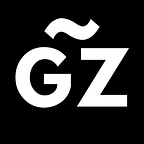What Is Blockchain?
Blockchain was originated as a new corporate model alongside the creation of Bitcoin by Satoshi Nakomoto in 2009. Blockchain is defined as a decentralized database technology that allows any transfer of property or asset, whether tangible or intangible to be registered and verified into a ‘distributed, immutable, transparent, secure and auditable ledger’ without the need of a trusted third-party intermediary (such as the Central bank) in acting as the ‘guarantors of the assets’ until the ledgers of participating entities become discretely updated. With the openness nature of the Blockchain, any entity at any time is given accessibility to consult, verify, and collate the chronological order of transactions that have been entered into the system. In light of this, the Blockchain protocol structures any inserted entries into a chain of blocks, where every node on the blockchain network consists of an identical ‘set of bitcoin transactions performed at [any] given time’ . Every block consists of four components, a ‘header’, the ‘body content’, ‘timestamp’, and ‘proof of work’, that is linked together from the previous block (Figure 1: illustration of blockchain data structure). Hence, forming a chain, called the “Blockchain”.
(Extracted from: Singhal,Dhameja, & Panda, 2018, p.9)
However, at the heart of the Blockchain mechanism, it is important to note, that Blockchain is not entirely a new business model. Rather, it revolutionises the traditional form of a general ledger, transitioning from a centralised to decentralised record-keeping system. In a centralised distributed system there is a presence of a master node (Figure 2: pictorial representation of a centralised system), whereby the node is either a ‘provider or a consumer’ who is responsible in disseminating and disintegrating the tasks or data across the nodes . In the perspective of traditional ledgers, it is owned by an entity (organisation, group, or individual) and is controlled by a delegated administering individual (such as an accountant) who plays the role in implementing changes to the ledger in the absence of consensus from the key stakeholders of the ledger.
(Extracted from: Reyna, et.al., 2018, p. 12)
In contrast, a decentralised system, lacks a master node and does not control the system, but is equally distributed to the individuals across the network, emphasizing a peer-to-peer network (P2P). Blockchain encompasses these qualities as a distributed ledger that is shared among the network of its stakeholders with changes unable to be updated merely by one administrator. Instead, modifications can only be made with the agreement of all participants within the network (Figure 3: illustrates how a transaction record is made within a blockchain based system). A major benefit from this model in exchanging assets from Party A to Party B, is the reduction in needing to ‘double spend’ by using the digital cryptocurrency, bitcoin or other alternatives, to be digitally transferred freely ‘with little friction’.
(Extracted from: Kuchelhaus & Chung, 2018, p.5)
Yet, because of its high price volatility, characteristic of lacking intrinsic value to be exchanged for another commodity, and not bypassed by ‘trusted banks and financial institutions’ unlike a fiat currency. This has become a heated topic of discussion in the business sphere about the potential opportunities Blockchain beholds in revolutionising ‘governance, ways of life, traditional corporate models, society and global institutions’ .
The Different Types of Blockchain
1. Public Blockchain (Centralized)
Blockchain systems are currently categorized into three types: The Public blockchain, Consortium blockchain, and Private blockchain. In the public blockchain, all records are visible to the public and everyone could take part in the consensus process. In other words, all the participants or anyone that joins the Blockchain network are able to access the database, store a copy and able to modify it by utilizing their computer power. Public blockchains are also known to be decentralised as no one has control over the network. Several potential applications that seek to utilise this form of blockchain system include cryptocurrencies such as Bitcoin, Ethereum.
2. Consortium Blockchain (Distributed)
The second category of blockchain, the consortium blockchain, is open to all of the public, but differs from the public blockchain in the sense that not all data are made available to all participants. It is known that user rights might differ, and the blocks are validated based on predefined rules. Hence, it can be considered to be ‘partly decentralised’ and is defined by Vitalik Buterin to be one that “provides a hybrid between the ‘low-trust’ provided by public blockchains and the ‘single highly-trusted entity’ model of private blockchains’. (Buterin, V, 2015). Consortium blockchains seek potential for future use in the financial industry (for enhanced transactions) and for any other projects involving organizational collaboration.
3. Private Blockchain (Decentralized)
The last category of blockchain present is known as private blockchains, where a central authority manages the rights to access or modify the database, and is regarded as a centralized network with only one organization having full control. This form of permissioned network places restrictions on who is allowed to participate in the network and in what transactions, therefore allowing for greater privacy than a public blockchain. This presents the opportunity for it being utilised in government related industries like law enforcement and the military, and for voting and balloting purposes as well.
Other Great Sources To Look At:
- BlockchainHub ( blockchainhub.net/blockchains-and-distributed-ledger-technologies-in-general/
- Medium ( medium.com/altcoin-magazine/the-different-types-of-blockchains-456968398559 )
- Coinsutra ( coinsutra.com/different-types-blockchains/ )
- Medium-Hackernoon ( hackernoon.com/3-popular-types-of-blockchains-you-need-to-know-7a5b98ee545a )
- edureka ( www.edureka.co/blog/types-of-blockchain/ )
- BlockchainExpert ( www.blockchainexpert.uk/blog/types-of-blockchain )
- Medium-The Modex Team ( blog.modex.tech/exploring-the-different-types-of-blockchain-10395da93a51?gi=46e59bee63b4 )
